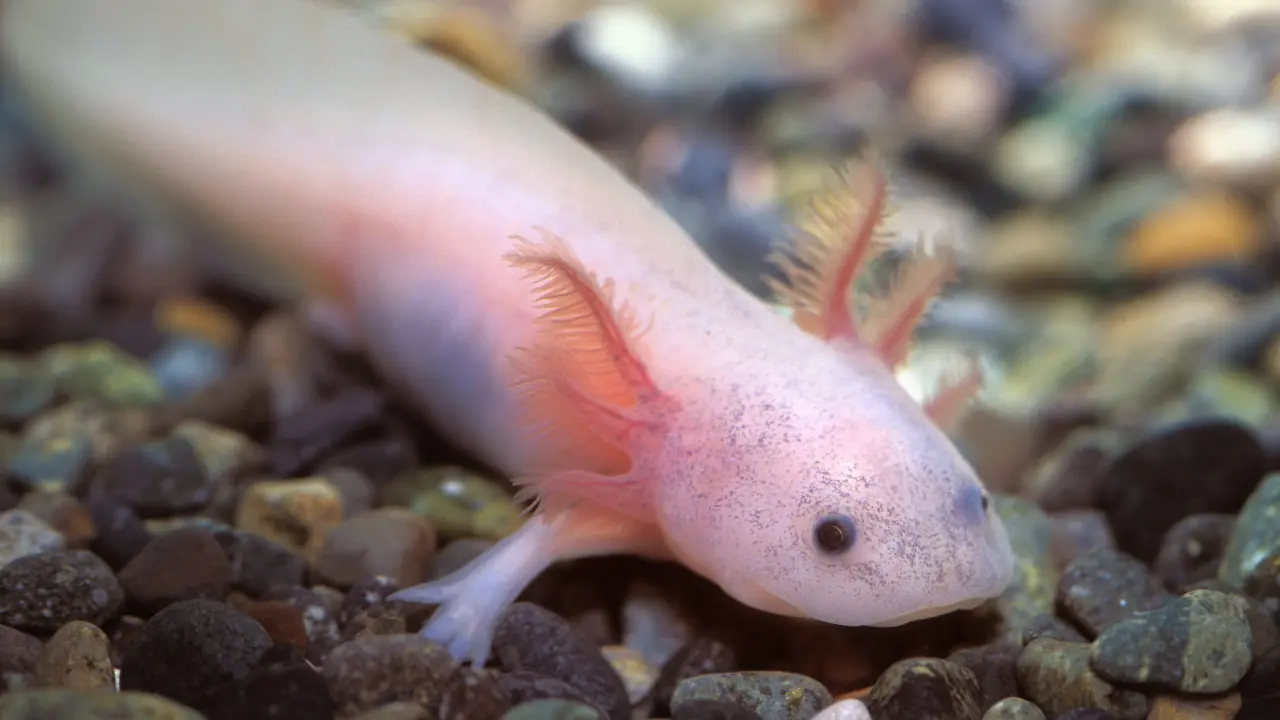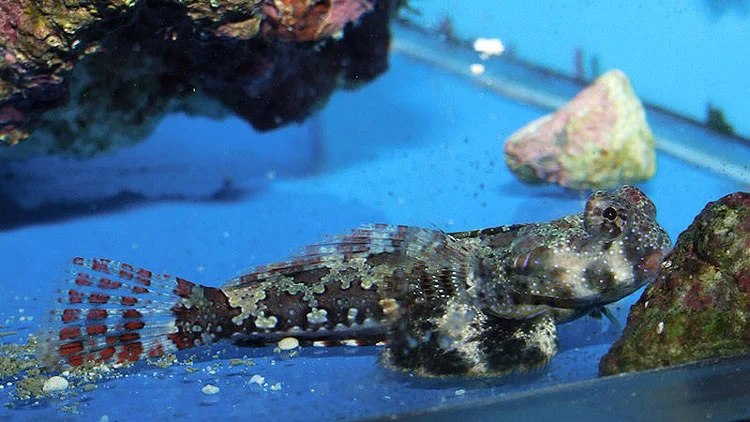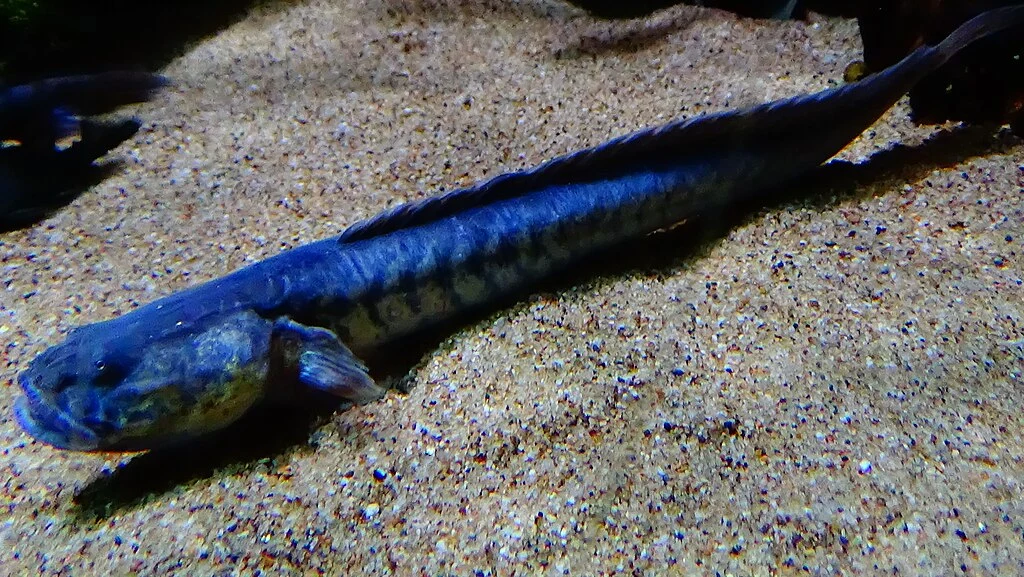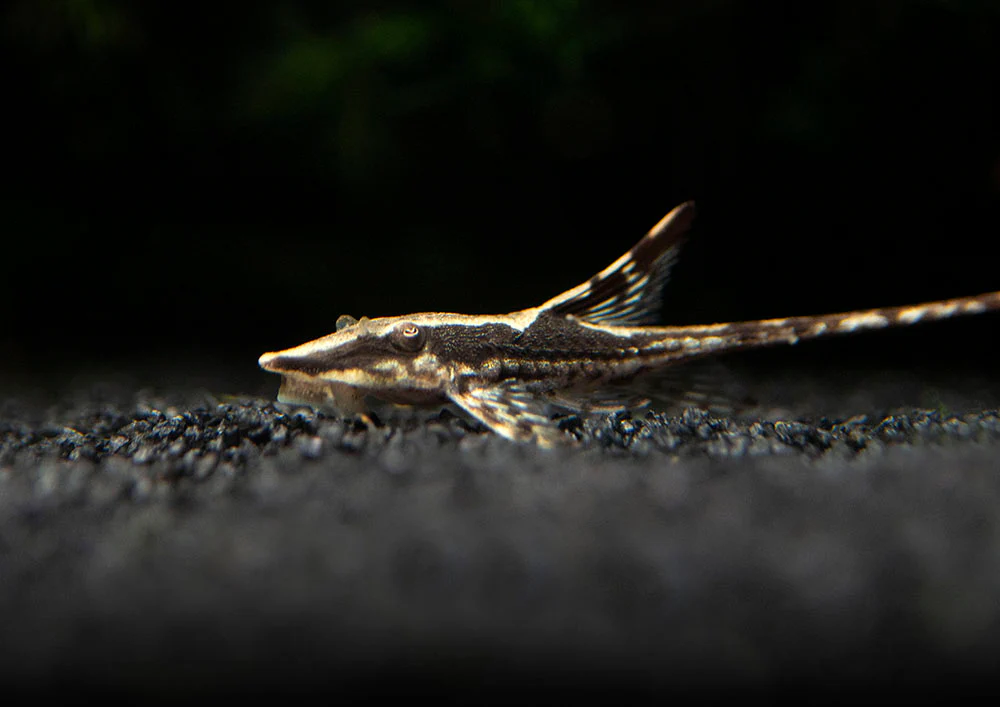We understand that you want to add something unique to your tank, something that stands out! When we think of fish, we assume sleek, flowy creatures with fins. But here’s the fun part, not all fish look like this.
What if I told you that there are fish that defy the typical aquatic mold? You see, some fish have unique characteristics like none others. Today, we will discuss some of these unique fish that look like lizards.
Let me ask: What fish do you think looks like a lizard? Let’s answer that but before that, here’s what we’ll cover
In this article, we will explore the natural habitat and origin of these unique fish. We will discuss their appearance. Along with that, we will also discuss the features that complete the lizard-like look. Here is a list of the Top 6 Fish that look like lizards.
Axolotl
The axolotl is native to the lakes below Mexico City. This salamander is usually seen around Lake Xochimilco. It thrives in freshwater lakes and canals, generally located at high altitudes.
Despite common misconceptions, this creature is neither a fish nor a lizard. It is a salamander but many people mistakenly refer to it as a fish.

Talking about looks, the Axolotls have a wide head and feathery external gills. They have soft skin that comes in various colors like shades of pink, white, brown, and black.
Interestingly Axolotls are known for their incredible ability to regenerate limbs, and being one of the fish that look like lizards, they might even give your finger a curious nibble—thinking it’s a tasty treat!
Moreover, they can also venture on dry land for a short time and gulp air straight from the surface. However, they avoid this behavior and remain fully aquatic throughout their lives.
Coming to the lizard-like appearance, the Axolotls have a long body and tail. These characteristics complete the lizard-like look when paired with the feathery gills. Unlike other amphibians, the Axolotl refrains from life on dry land. This way, it maintains its long flowy body hence preserving the lizardly look.
Reef Lizardfish
The Reef Lizardfish is native to the warm coastal waters of the Indian and Pacific Oceans. These fish thrive in coral reefs and sandy bottoms. They are usually found in depths of about 1 to 30 meters. This specific environment allows the fish to hunt prey and hide from predators.
Reef Lizardfish have a long, streamlined body that can grow up to 20-30 centimeters. They usually have a mottled pattern of brown, white, and reddish colors. However, their coloration can vary from fish to fish. This particular coloration allows them to camouflage in their natural habitat.

Additionally, this fish has sharp, conical teeth and a large mouth. This adaptation allows them to capture and eat small fish and invertebrates.
As the name suggests, The Reef Lizardfish looks like a lizard, thanks to its elongated body and snout. Moreover, its eyes are placed on top of its head to provide a wide view, which also adds to the look.
All in all, this fish looks like a lizard but isn’t related! If it attended a family reunion, the lizards would probably ask, “Who invited the fish?” The reason behind such a look is the convergent evolution to hunt well and survive.
Dragonet
The Dragonet is a small and colorful fish primarily found in the Indo-Pacific region. It thrives in shallow, coastal waters like coral reefs with sandy bottoms. These tropical and subtropical marine habitats provide plenty of food and shelter.

Dragonets have vibrant bodies with colors like blue, green, orange, yellow, and red. Additionally, their bodies are adorned with intricate patterns. Not all but some fish even have beautiful fin patterns.
This fish has a slender body that typically ranges between 2 to 6 inches in length. So, they comparatively look smaller than other fish that look like lizards. They
Despite being fish, dragonets look much like lizards due to their body and movement. The way they perch on their pectoral fins gives them a reptilian look. Because of this adaptive movement, this fish can blend in the sea bed and avoid predators. This behavior also aids in foraging for food.
Bichir
The bichir is a prehistoric fish that inhabits the freshwater environments of Africa. It thrives in rivers, lakes, and swamps across the continent. Generally, it prefers slow-moving or stagnant water with submerged vegetation.
Interestingly, this fish has a unique adaptation. Unlike other fish that look like lizards, it has lungs and gills. This allows the bichir to survive in waters with low oxygen levels.

Talking about the looks, this fish has an elongated body that can grow between 12 to 24 inches. It has a dark green to brown body color that provides camouflage. Moreover, its body is covered with thick armored scales that complete the viper look.
Additionally, the dorsal fin has small spiny sections. These small sections resemble the lizard’s back spine. All these characteristics combined make a vicious look that somewhat resembles a lizard.
The bichir’s lizard-like appearance is due to physical adaptation and ancient lineage. Its vicious looks and scales are actually used for protection and survival in the wild.
Dragon Goby
The Dragon Goby originates from the brackish waters of the Atlantic coast of America. It thrives in estuaries, mangrove swamps, and coastal lagoons. The freshwater and seawater meet in these environments, providing a brackish habitat. These waters are a mix of saline and freshwater thus fulfills the fish’s requirements.
This Dragon Goby has an elongated body that can reach up to 24 inches in length. Its body is covered in translucent scales, so its inner organs are visible. Its beautiful body can have colors ranging from pale gray to purple hues. Interestingly, its body color depends on its habitat and diet.

Unlike Other fish that look like lizards, this fish has a mouth positioned ventrally. This adaptation gives the fish a peculiar look however, it’s crucial for the fish. It works as a shovel, helping the fish to pick food from the substrate.
The Dragon Goby looks like a lizard due to its elongated and slender body. Moreover, the scales and head shape enhance the resemblance. In addition, its small, beady eyes and the way it moves on the water surface mimic a lizard swimming.
Whiptail Catfish
The Whiptail Catfish is native to the freshwater rivers and streams of the Amazon Basin. It thrives in slow-moving water with a lot of vegetation. Typically, it inhabits the lower part of water as it eats detritus and algae. This way, it contributes to the ecosystem by keeping it clean and maintained.
The whiptail catfish, one of those fish that look like lizards, tried biting my finger—I guess it thought I was the algae-covered rock!

In terms of appearance, the Whiptail Catfish has a slender and elongated body. It can grow up to 6 inches in length. Its body has a brown, grey, or black color that helps it blend in. Moreover, this body is covered with armor-like plates that complete the look. Interestingly, this fish has a whip-like tail, hence the name.
The Whiptail Catfish looks like a lizard, primarily due to the long, plated body that resembles a lizard’s skin. Moreover, it has a narrow snout that enhances the reptilian look. But this look is more than you think! You see, this appearance is a result of evolution. It allows the fish to protect itself from predators and hide in plain sight.
African Lungfish
The African lungfish originates from freshwater habitats across sub-Saharan Africa. It is usually found in rivers, swamps, and floodplains. These environments are ideal for the lungfish as they fulfill its needs even in the dry season. This fish is well adapted to these habitats. Sometimes, it even burrows itself in the mud to survive droughts. This behavior is much like the reptiles that aestivate to avoid the desert heat.

The African lungfish has an elongated eel-like body reaching almost 1 to 2 meters. Rather than scales, its body is covered in smooth slime. Additionally, it has thin pectoral and pelvic fins that look like limbs.
Despite being a fish, the African lungfish has a striking resemblance to a lizard. mainly the limb-like fins and long body is responsible for this resemblance. On top of that, these fins even allow the fish to crawl on the muddy bottom, which again adds to the reptilian look.
Looks aside, this fish has no lineage related to the lizard. All these lizard-like characteristics are a result of adaptation to its natural habitat.
The African lungfish, another of those fish that look like lizards, can survive out of water for months
More fish that look like Lizards
Here is a list of more fish that look like lizards. Keep up with our upcoming blogs to find out more about these unique aquatic marvels.
- Reef Lizardfish
- Mudskipper
- Snakehead Fish
- Armored Searobin
- Sculpin
- Flathead Fish
- Sand Diver
- Sea Robin
FAQ’s
What water fish looks like a lizard?
Many fish resemble the lizards. Some of these include the African lungfish, bichir, and axolotl. However, it’s important to understand that these fish are not actually lizards. They only resemble the reptile because of natural adaptation.
What is the lizard looking fish?
A fish that might look like a Lizard can be the African Lungfish. It has a striking resemblance to the Lizard. However, several fish resemble the Lizard so you can’t be sure!
Is it possible to keep lizard looking fish in a home aquarium?
Yes! You can keep a Lizard look-a-like fish in your tank. However, you must ensure that you fulfill the fish’s needs. It’s always best to do some research about a pet before adding it to the family.
Fish that look like a dragon?
The Dragon Gobby is a well-known fish that resembles a dragon. It also resembles a lizard, thanks to its appearance.
Lizardfish for a freshwater aquarium?
The Lizardfish itself generally refers to a marine water fish that is unsuitable for a freshwater tank. However, if you are asking about freshwater fish for your tank, that look like lizards, check out the Axolotl and whiptail catfish.
Conclusion
Wrapping everything up, today we discussed the 6+ most popular fish that look like a lizard. In essence, we discussed their natural habitat and origin. We also explored their general appearance and lizard-like characteristics. Lastly, we covered the reasons behind this look.
In conclusion, most of these have these looks because of evolution. As these fish live in habitats with certain requirements, they have to adapt to survive. Mostly, the long body allows them the move with agility, and the dark color allows them to blend in. This way these fish find food, and avoid predators.
Call it a coincidence or nature’s play, but these adaptations can puzzle a person into assuming that these fish are lizards.
Let me ask: What do you think about these fish that look like lizards? Would you keep one in your aquarium? Share your thoughts and queries in the comments below!
